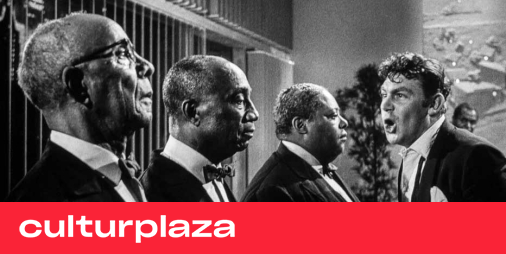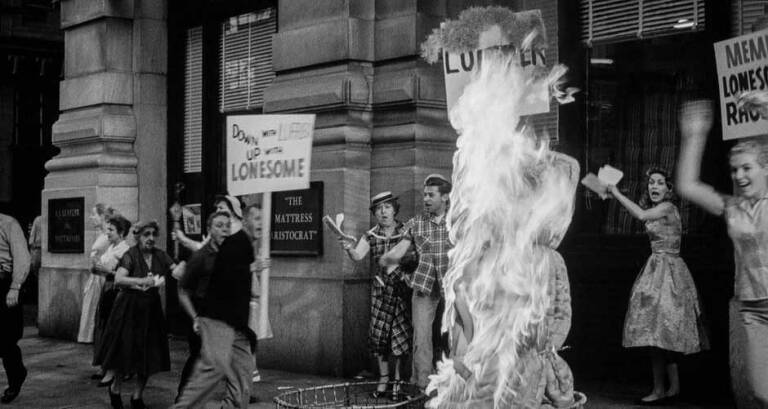The influencer’s personality was already addressed by “Face in the Crowd” in 1957

Valencia. If you want to analyze a recent or current phenomenon, turn to the cinema more than half a century ago. This saying always works. It is also valid for literature, but in this column we are talking about the silly chest. Today, there is not a week in which we do not hear the controversial words of some influential. Nor can we say that television in this aspect is an object of light, because the programs that occupy the most hours on the screen live on the words of their fellow members, a character mistakenly called a talk show host, in which we can find people who specialize in subjects that try and are real influencers Those who say the first thing that comes to their mind in order to achieve the applause or hatred of the masses, whatever the reaction that the audience provokes and guarantees them to continue to occupy the seat.
None of these phenomena is new no matter how widespread the Internet and the proliferation of television channels. the film face in the crowdfrom Ilya KazanIt was first shown in 1957 and gave the release alpha and omega treatment. Was the script writer Bud Schulbergto whom we owe respect Nazi plan Documentary poster for Nazi propaganda almost in the same style Martin Patino
He served as evidence at the Nuremberg trials. Here, twenty years later, Schulberg was interested in other personalities, media priests. The story that led to the appearance of this tape, Your Arkansas TravelerHe had written it in 1953.
face in the crowd He told the story of a radio program of the same name that gave prominence to unknown personalities. One day, the presenter goes to the Sharif prison to see how much the prisoners give themselves and finds a drunk who plays the guitar and instantly wins the audience. The guy is so charismatic that he won a place on the show, criticized local politicians, and managed to permanently amaze the audience.
Already confident he’s making fun of advertisers, and when they pull his campaigns back, he manages to get people to burn their products on the street. This is his strength. Thus, fired like a rocket, he managed to get a job on a TV show in New York. Now they want him to give a touch of “street man” to a presidential candidate who talks about taxes very similar to what is now found in certain sectors of Spain. You have to lower them, when you are not eliminating them. In his letters, he influential He praises the men of the past, the strong men, who did not need pensions or those inventions. Real Americans.
The inspiration for the movie came from public figures of the time. was the most obvious Arthur Godfrey “The Old Redhead” which appeared six days a week on television and whose studio had a farm in Virginia. His ploy was to mock his patrons, but not his products. This increased sales. He was one of the greatest advocates of tobacco, but later, when he contracted lung cancer, he joined voices calling for his control.
Another source of inspiration was Billy Graham. In this case, he was an evangelical preacher, perhaps the most influential in American history. friend of Martin Luther King s Nixon At the same time, but at the time the film was being made, he was famous for his Crusades, rallies which until 1953, when Schulberg wrote his story, were separate. Finally, the third effect was the effect of Huey Long. A politician who worked during the Great Depression as a spokesperson and advocate for the poor. However, he focused his criticism on .’s new deal Roosevelt And reinforced the isolation of the United States in international conflicts.

Caller treatment was close to famous Citizen Ken from OrsonThat monster that devours him himself. In this case, what Schulberg and Kazan denounced was that behind the man of the people, who speaks just as people and people understand him, there was a megalomaniac who cared little for people and all his concerns were trivial and for a glory greater than himself. pushy.
As it happened to Goldfrey, who kicked out a live collaborator in a bad way and angered his followers, in the movie the hero plays a dirty trick from the TV studio control room and appears in frivolous conversation laughing at how he treats audiences who despise his own wits. This will get you out of your favor.
Decades have passed, but today this number is more vibrant than ever. The widely popular demagogue, feared and adored by politicians, remains perfectly valid. Francois Truffaut He was one of the few who praised the film unreservedly in the brochures of du Cinema. I consider it a ‘beautiful’ and important work, but above all he emphasized that it ‘beyond the dimensions of a film review’.

It was true. The crucial fact in this film was not the art, but rather the presentation of the aforementioned caller’s character. The media always faces a dilemma, especially now that the supply is almost unlimited. If specialized and solvent information is presented, two similar problems occur: it is not exciting, the audience is bored. The model can be that of a charismatic presenter with knowledgeable collaborators, but in the long run it also prefers charismatic collaborators. With the arrival of the field without doors like the Internet, everything fell on charisma. The solvent information given by non-professional callers, present and very good, is water droplets in the sea compared to the volume occupied by the Charismatics.
When the film was presented on the set of the excellent Criterion in 2019, it was already warned that it would be natural for viewers to ask themselves “uncomfortable questions” with the current state of US politics. What is implied by the idea of this very current movie, which appeared in 1953, is that mass communication since its birth in sin carried penance, however, decades have passed and the danger not only remains, but increases without anyone thinking of a clear solution to do so. Not to go into obvious ambiguity such as an allusion to education.
Another interesting detail is that Kazan, who was a member of the American Communist Party, ended up criticizing his comrades on the Committee on Un-American Activities. Schulberg did the same. For this reason, they were both rejected by the profession, by its left, for the rest of their lives. Also for this reason, they worked together. The paradox referred to by the file of the standard is that the left, despite all this, praises it face in the crowd Conservative critics dismissed it as left-wing propaganda. More merit for this insightful movie, which is totally related to network from Sydney Lumet.

“Professional problem solver. Subtly charming bacon buff. Gamer. Avid alcohol nerd. Music trailblazer.”




:quality(75)/cloudfront-us-east-1.images.arcpublishing.com/elcomercio/6NEH6FMKYBCU7JJWZ5GVRZKTRM.jpg)
/thumbs.vodgc.net/1-14-FnXFWZ1684253239488_1080P.jpg)





